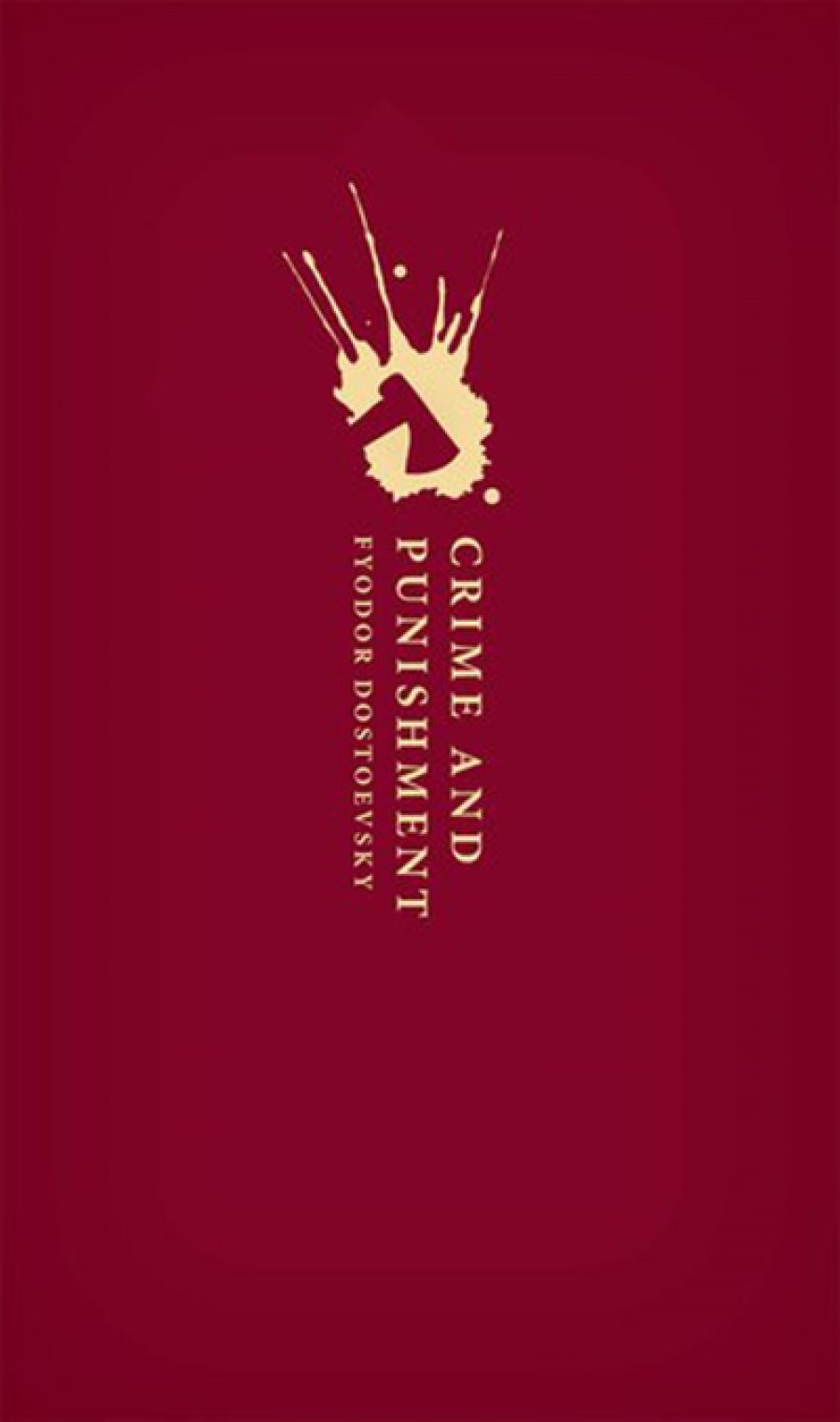
- Free Article: No
- Contents Category: Fiction
- Custom Article Title: Slobodanka Vladiv-Glover reviews 'Crime and Punishment' by Fyodor Dostoevsky, translated by Nicolas Pasternak Slater
- Review Article: Yes
- Online Only: No
- Custom Highlight Text:
On its first appearance in Russia, Dostoevsky’s novel 'Crime and Punishment' was the hit of the season. It was serialised throughout 1866 in the journal 'The Russian Messenger'. Nikolai Strakhov, Dostoevsky’s first biographer, described the novel’s effect on the reading public as spectacular: ‘[A]ll that lovers of reading talked ...
- Book 1 Title: Crime and Punishment
- Book 1 Biblio: Oxford University Press, $34.95 hb, 545 pp, 9780198709701
For English translators of the novel, their renditions should reflect the stylistic and conceptual sophistication of the original, transposed into the linguistic potential of the target language. Nicolas Pasternak Slater’s new translation, with notes and an introduction by Sarah J. Young, tries to do just that, and mostly succeeds. Stylistic precision and neatness are qualities of Slater’s translation, which is the best we have in English. It surpasses, in terms of English prose and sentence rhythm, recent predecessors, with the exclusion of the old David Magarshack translation (1951). While this neatness entails some omissions, these are in the interest of good English, a feature of which is economy of expression and directness. In terms of sentence structure and lexicon, Slater’s translation reads like an original English text. But this can have a price, with respect to central motifs in the novel and the rendering of Dostoevsky’s stylistically loaded Russian lexicon in key passages. For example, inside the old pawnbroker’s flat, ‘a lamp was burning before a small icon’. The Russian word lampada/ лампада, used in the original, means ‘icon light’, not a generic room lamp. A religious artefact, the icon lamp adds mystery and spiritual tension to the scene. The fear of repetition probably motivated the omission of ‘icon’ in the complex noun ‘icon lamp’.
A similar discrepancy between the original and the translation occurs in the old pawnbroker’s fictional portrait, in which Slater perpetuates a lapse made by earlier translators, though he tries to add more softness to the description than his predecessors: ‘She was a tiny, dried up little old crone of around sixty, with sharp evil-looking eyes and a short pointed nose.’ Dostoevsky’s use of diminutives makes for a ‘softer’ portrait in the original; the impression is that of a frail and vulnerable, but feisty, old lady, not a ‘crone’. The Russian diminutive form starushonka, with the suffix ‘-onka’, does have a pejorative connotation, but it is not as strong as the English connotation of ‘crone’. The old lady’s eyes, described with another diminutive – glazki/глазки (‘little eyes’) – reinforce this impression of vulnerability, even if it is tinged with malice. The narrating voice in the original is thus patronising towards this potential victim of Raskolnikov’s fantastic project, rather than demonising her.
On the other hand, Slater’s translation can be too mild with respect to the force of a psychic state described in the original. For example: ‘At that point he hadn’t yet started believing in those dreams of his – he would just tease his imagination with their repellent yet tempting audacity.’ In the original, Raskolnikov lacerates himself with these fantasies of his; he is in a state of irritability akin to hypochondria, established in the opening pages like a leitmotif. Here, his fantasies are described as obscene, in the sense of formless (bez obraza/без образа – without form), hence unimaginable, the very antithesis of ‘teasing his imagination’. These fantasies return, like the repressed, and are ‘insistent’ and more than just ‘tempting’: they are like contagion. The Russian derzost/дерзость (impertinence), too, is a word with only negative connotations, whereas ‘audacity’ in English can be positive. Derzost, on the other hand, implies not positive but transgressive daring.
 Portrait of Fyodor Dostoevsky by Vasily Perov, 1872 (Tretyakov Gallery, Wikimedia Commons)For every such inadequacy in conveying the stylistic force of the original, Slater’s translation often hits the mark and fulfils his intention: to produce ‘an easy readable English style that does not smack too much of translation’.
Portrait of Fyodor Dostoevsky by Vasily Perov, 1872 (Tretyakov Gallery, Wikimedia Commons)For every such inadequacy in conveying the stylistic force of the original, Slater’s translation often hits the mark and fulfils his intention: to produce ‘an easy readable English style that does not smack too much of translation’.
This is the only recent translation Crime and Punishment with a substantial critical apparatus. Sarah Young’s explanatory notes, surpassing all those of earlier translations (those by David McDuff, and Richard Pevear and Larissa Volokhonsky in particular), are based on the notes in the thirty-volume Collected Works of F.M. Dostoevsky (1972–90) and the lifetime research on the novel by the Russian Dostoevsky scholar Boris Tikhomirov, a world authority on Dostoevsky and this novel in particular. This is an ideal edition to prescribe for senior high school and undergraduate teaching.
While the critical apparatus of the notes is a major scholarly achievement of this edition of the translation, the criticism on Dostoevsky’s poetics and his novel in the introduction is traditional rather than innovative; it engages with the content rather than the form of Dostoevsky’s opus. Especially since the fall of communism, the reclamation of Russian Orthodox belief has seen a wave of Christian interpretations of Dostoevsky’s opus in general and Crime and Punishment in particular. Such interpretations do not engage with critical approaches that might connect Dostoevsky’s works with the broader field of phenomenological thought, including psychology or psychoanalytic theory. Nevertheless, Young’s Introduction lays a good foundation for readers who are new to Dostoevsky, and neatly covers all the major aspects of the novel in its historical context, within the editorial constraints of a translation.


Comments powered by CComment